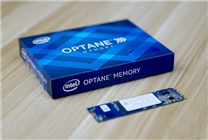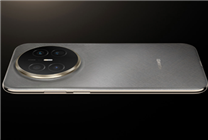Summary
- Optane Memory Overview: A unique technology designed to accelerate mechanical hard drives, significantly boosting read and write speeds.
- Performance Insights: While Optane can enhance performance for repetitive tasks, its benefits are limited to specific hardware conditions.
- Compatibility Considerations: Not every user will benefit from Optane memory, particularly those without compatible Intel processors.
In recent months, the prices of memory and solid-state drives (SSDs) have surged, making machine builds more expensive. In response, many tech enthusiasts have begun recommending Intel’s Optane memory, particularly the 16GB version, which is priced at a mere 15 yuan.
Understanding Optane Memory
Optane memory, while often referred to as "memory," functions primarily as a high-speed cache for mechanical hard drives. Introduced in 2018, it exists in two variants: 16GB and 32GB. These modules resemble M.2 PCIe SSDs and require dedicated M.2 slots for installation.
Performance Improvements
Curious about its effectiveness, users have conducted performance tests using the 32GB version of Optane memory. Here are key findings:
-
Sustained Read and Write Speed: With Optane memory installed, the continuous reading speed of mechanical drives jumped dramatically from 190MB/s to an impressive 1265MB/s. Continuous write speeds improved from 192MB/s to around 287.8MB/s, showcasing significant performance enhancements.
- Random Read Performance: The results for random read performance are even more striking. An unenhanced mechanical drive achieves only about 70 IOPS, whereas a system equipped with Optane can spike to 30,128 IOPS. The smallest 64KB random read tests showed an astonishing improvement to 9,392 IOPS, marking a substantial qualitative leap.
Despite these impressive stats, there are several caveats to consider before opting for this technology.
Limitations of Optane Memory
While opting for Optane memory can offer enticing performance benefits, there are limitations that users should be aware of:
-
Learning Curve: The system must undergo a learning process to optimize speed for frequently used applications. Initial installation might not reveal immediate benefits; it takes repeated usage for Optane to effectively cache the programs you utilize regularly.
-
Inherent Constraints: Although it enhances read speeds to a level that surpasses SATA SSDs, it cannot match the performance of PCIe SSDs. The benefits in write speeds are less pronounced, which could be a drawback for users handling large file transfers or extensive data operations.
- Capacity Considerations: With only 16GB or 32GB of capacity, if your operational data exceeds this threshold, performance may revert to that of a traditional mechanical drive. Moreover, each Optane module occupies an M.2 PCIe slot, which may limit your hardware configuration options.
Compatibility and Platform Restrictions
As of now, Intel’s Optane memory primarily supports 7th to 11th generation Intel Core processors. Unfortunately, it does not offer support for AMD platforms or the latest Intel generations. This limits the user base significantly, as not all hardware configurations are compatible.
Conclusion
In summary, while Optane memory enhances the performance of mechanical hard drives significantly, its advantages are somewhat restricted and dependent on compatible hardware. Ideal users would be those with 7th to 11th generation Intel processors who have spare M.2 slots and a budget suited for this low-cost upgrade.
If your hardware doesn’t meet these requirements, it may not be worthwhile to invest in Optane memory. Understanding how this innovative technology works can certainly enrich your knowledge base, but purchasing new compatible hardware specifically for Optane may not be necessary.






